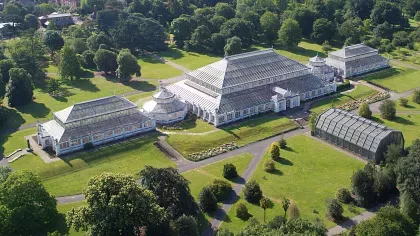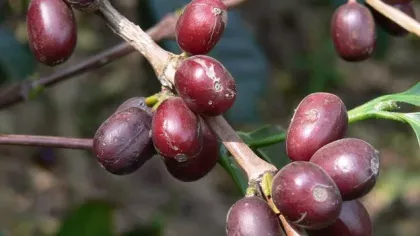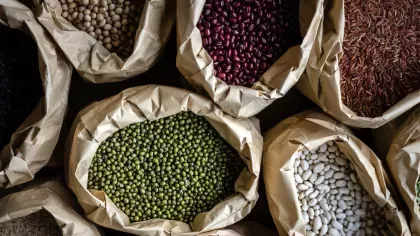2 May 2017
Can we stop burping cows heating up our planet?
New research led by scientists at Kew has revealed a ‘vicious cycle’ of warmer temperatures, tougher plants and increasing emissions of greenhouse gases from livestock; but changing livestock diets may be the solution.

What do cows have to do with climate change?
There is no doubt that our planet is warming up and we are all contributing. One of the main reasons is linked to the production of the food we eat, the milk we drink and even the shoes on our feet. This is because livestock farming is a major source of the greenhouse gases that are warming our planet. You need to chop down a lot of trees to make pasture for animals to graze and you need a lot of energy to keep meat cool and transport it around the world. Perhaps most importantly, ruminant livestock like cows, sheep and goats produce a lot of the potent greenhouse gas, methane.
Most people have got the wrong end of the stick, and indeed the wrong end of the animal, when it comes to the source of methane. The vast majority, over 95%, actually comes from the animal’s breath. This happens when animals 'chew the cud', a process which involves chewing food that has already been partly digested by the first of four stomach compartments. When this happens animals also burp up methane, which can be measured. We have realised recently that the amount of methane that animals breathe out is very strongly linked to what they are eating. We call the plants that livestock eat ‘forage plants’.
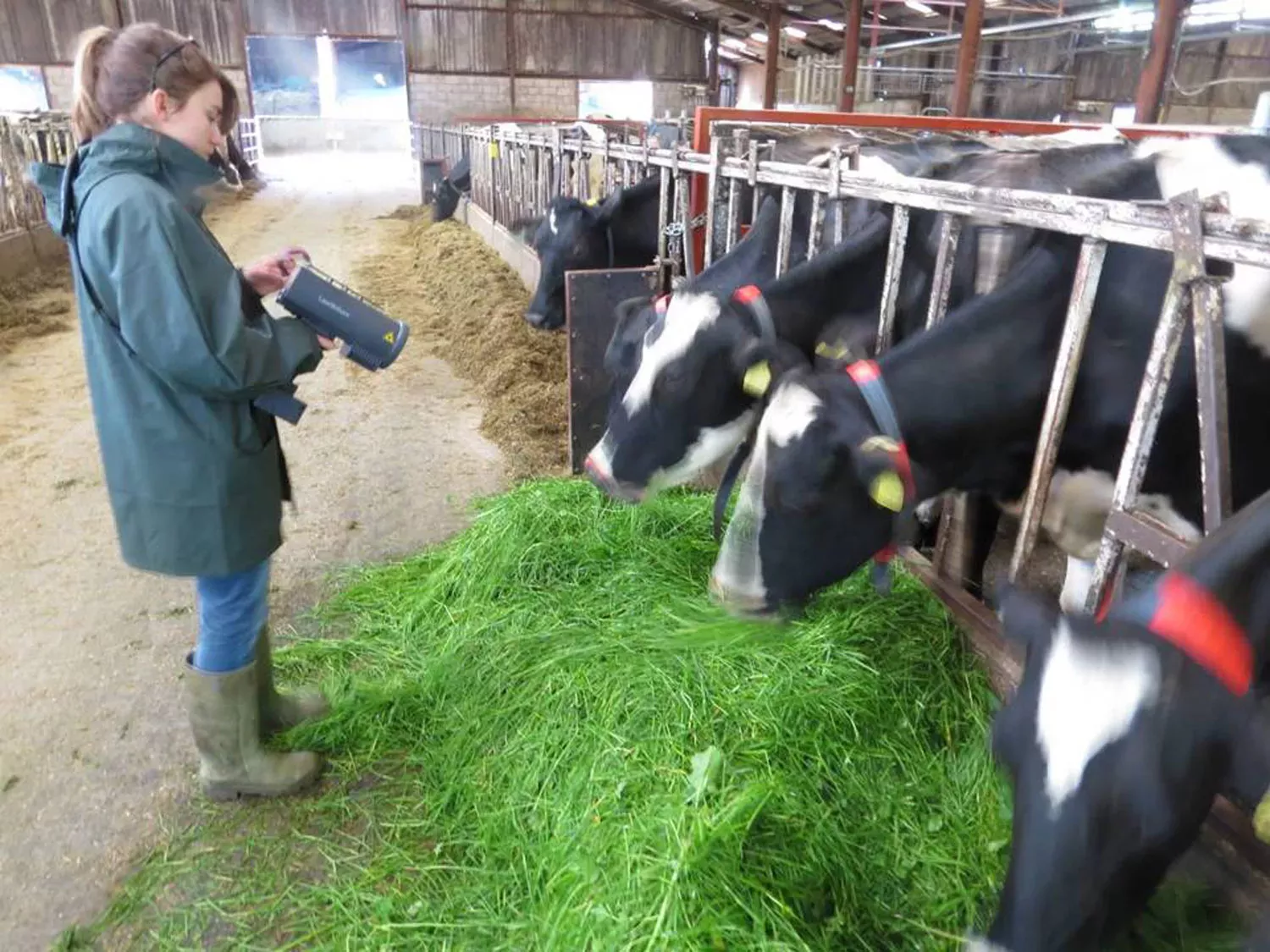
The grass is not always greener
We scoured the literature to find out what is known about forage plants, initially focussing on grasses. Each year, 2.3 billion tonnes of grass is consumed by livestock around the world. We found over 800 measurements from 55 different grass species grown across Asia, Australasia, Europe, the Middle East, North America and South America. One of the most striking features of these measurements was just how different forage grasses can be. Some are highly nutritious, providing lots of useful proteins, sugars and fats, whilst others are much less nutritious.
We showed that less nutritious grasses are more common in arid and equatorial regions of the world. This is one of the reasons why livestock farming is more difficult there. Grasses growing in warmer climates take measures to protect themselves from damage from the sun and to avoid losing water. They have smaller and thicker leaves, thicker cell walls and narrowly spaced veins. They can have more vascular tissue, and accumulate lignin and silica. These plants can also flower earlier and are generally more hairy. All of these features mean that plants become tougher and more difficult for grazing animals to digest when temperatures increase.
A vicious cycle
Our research has revealed that this process is a vicious cycle, or what scientists call a ‘positive feedback’. Under climate change, a warmer environment alters plants so they are tougher to digest, and so each mouthful spends more time in the animals’ stomach, producing more methane, further warming the planet and the cycle continues.
Currently there are around 1.5 billion cows, burping out methane equivalent to 3 billion tonnes of carbon dioxide. We modelled how much methane production might go up as a result of cows eating tougher plants in a warmer world. We predicted that the increase in methane will be equivalent to between 20 million and 90 million tonnes of carbon dioxide by 2050. This is the about the same as between 4 million and 19 million extra cars on the road. As the numbers of cows are also expected to almost double by 2050, then these numbers will go even higher.
Temperature increases will be seen around the world, but unfortunately some regions will be more severely affected than others. We identified hotspots for future increases in methane production across North America, Central and Eastern Europe and Asia using an optimistic climate change scenario. These hotspots became more widespread in a severe climate change scenario. At present, the greatest densities of cattle can be found in parts of Asia, North and South America, Europe and across Australasia. Some of these regions have a high risk of both reduced livestock productivity and greater methane production in the future.
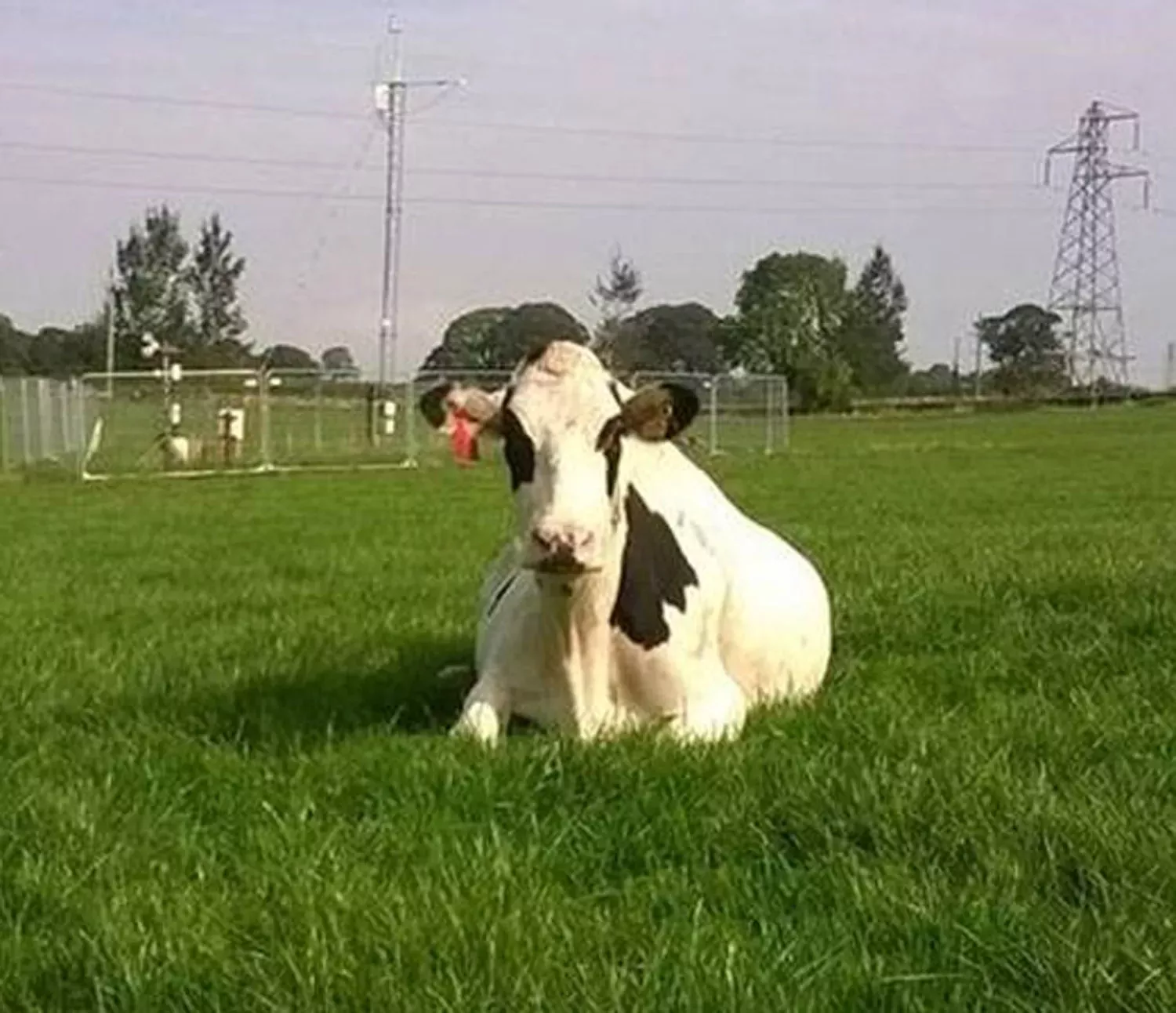
What can we do about it?
We already know that action is needed to reduce the environmental footprint of farming. There has never been a better time to do this than now. The demand for meat-rich diets is increasing rapidly around the world. In some regions growth rates are remarkable, particularly in some parts of Asia and Africa.
It seems unlikely that meat and dairy production is going to slow any time soon. Livestock are a global asset, worth around $1.4 trillion to the global economy, and livestock farming employs around 1.3 billion people around the world, directly supporting over 600 million smallholder farmers. Action is not just needed in the developing world; all of our farming systems could be more sustainable.
Our research has shown that cultivating more nutritious forage plants may help us to combat the challenges of warmer temperatures. Data we have already collected is a start. However, there are large regions where we know very little about what livestock are eating. At Kew, we are looking for the plants that are associated with the lowest methane production, aiming to manage landscapes to increase these species. We are investigating sustainable practices, such as silvopastoral farming which incorporates trees into pasture. We are also improving our models so that we can help the farmers who are going to be exposed to the biggest impacts of climate change. These are challenging problems, but plant science can play an important role in solving them.
References
Lee, M. A., Davis, A. P., Chagunda, M. G. G., & Manning, P. (2017). Forage quality declines with rising temperatures, with implications for livestock production and methane emissions. Biogeosciences 14: 1403-1417.
Cameron, L., Chagunda, M.G.G., Roberts, D.J., & Lee M.A. (In review). A comparison of milk yields and methane production from three contrasting high-yielding dairy cattle feeding regimes; cut and carry, grazing and total mixed ration. Animal Feed Science and Technology.
FAOSTAT. (2017). Food and Agriculture Organisation database.
Herrero, M., Havlík, P., Valin, H., Notenbaert, A., Rufino, M. C., Thornton, P. K., Blümmel, M., Weiss, F., Grace, D. & Obersteiner, M. (2013). Biomass use, production, feed efficiencies, and greenhouse gas emissions from global livestock systems. Proceedings of the National Academy of Sciences USA, 110: 20888–93.
Steinfeld, H., Gerber, P., Wassenaar, T., Castel, V., Rosales, M. & De Haan, C. (2006). Livestock’s Long Shadow: Environmental Issues and Options. Food and Agriculture Organisation, Rome.
Thornton, P.K. (2010). Livestock production: recent trends, future prospects. Philosophical Transactions of the Royal Society B 365: 2853-2867.

